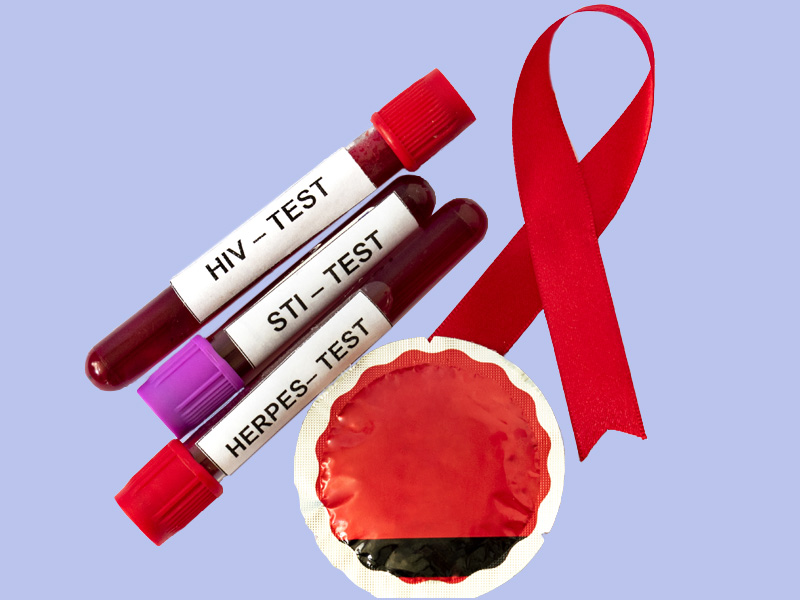
Some STDs or sexually transmitted diseases show up in certain types of blood tests. Others don’t.
In this article, we’ll look at:
- STDs detectable through targeted blood tests: HIV, syphilis, hepatitis, and herpes
- Infections not identifiable by blood tests: chlamydia, gonorrhea, HPV, and trichomoniasis
- Components of a comprehensive STD panel
- The window periods for STD detectability
- Interpretation of STD blood test results
- Advancements in STD testing
You probably know that early detection and treatment are key to managing sexually transmitted diseases (STDs) and preventing their spread.
Over one million people in the US and Canada get STDs each year. But there’s considerable confusion about how STDs are diagnosed. Do normal blood tests show them up? Or do you need special tests?
Let’s dive in so you can put your mind at rest and decide if you need an initial consultation with your primary care provider.
What STDs Can Be Detected by Blood Test?
When we refer to “normal blood tests,” we’re typically talking about the routine screenings conducted during a standard health check-up. These tests are designed to gauge general health markers such as blood cell counts, glucose levels, cholesterol, and liver and kidney function, among others. They’re not specifically tailored to detect sexually transmitted diseases.
These normal blood tests do not typically include STD screenings unless your healthcare provider specifically requests them based on your symptoms, sexual history, and risk factors.
That’s because STDs require targeted blood tests that look for specific antibodies or antigens associated with each disease, such as:
- HIV (Human Immunodeficiency Virus)
- Syphilis
- Hepatitis A, B, and C
- Herpes
STDs That Are Not Detected by Blood Test
While blood tests are effective for diagnosing a range of STDs, as above, several common infections do not rely on blood tests for detection. The following STDs require alternative testing methods to diagnose accurately:
- Chlamydia and gonorrhea – both of which can lead to pelvic inflammatory disease (PID)
- Human papillomavirus (HPV)
- Trichomoniasis
So let’s look at what’s included in a full STD panel that will cover more than blood tests in order to help diagnose any STD.
What Is Included in a Full STD Panel?
A full STD panel combines several diagnostic methods to ensure a thorough examination and accurate detection of sexually transmitted diseases. Here’s what typically goes into a full STD panel:
Physical examination of skin and oral mucosa and anal and genital areas
Blood tests (HIV, hepatitis, herpes, syphilis)
Urine tests (trichomoniasis, sometimes gonorrhea)
Swab test (HPV, chlamydia, gonorrhea, and herpes)
Lumbar puncture (extremely rare and done in an advanced stage of syphilis or if a herpes infection has affected your brain or spinal cord)
You have to bear in mind that there’s a “window” during which STDs can be detected after you’ve been infected. The window varies from a week to a few months afterwards.
Detection of STDs in Tests After Exposure: Understanding the Timeline
The window period for STDs to become detectable through testing after exposure can vary significantly depending on the type of disease and the method of testing.
Here’s a brief overview of how long it typically takes for various STDs to show up in blood tests:
- Hepatitis B (3-6 weeks)
- Hepatitis C (2-6 months)
- Herpes (1-4 months)
- HIV (2-6 weeks)
- Syphilis (1-3 months)
The timeline for urine and swab tests to return a positive result after exposure also varies:
- Chlamydia and gonorrhea: (1-2 weeks)
- HIV (1-3 months)
- Trichomoniasis (1 week to 1 month)
STD Blood Test Results Explained
Reading the STD blood tests can be a daunting experience! But understanding them is important for maintaining your health and making informed decisions about your care. Here’s a deeper dive into what these results mean.
Positive Results: A Sign to Take Action
A positive result on STD blood tests indicates that the laboratory has detected the presence of antibodies or antigens specific to an STD. This suggests an active infection that requires attention.
Receiving a positive result is a clear signal to consult with your healthcare provider for further evaluation and discussion of treatment options. This is also when you would inform your sexual partner about your status so they can get tested and receive treatment if necessary.
Negative Results: Not a Clean Bill of Health Just Yet
A negative result suggests that the test did not detect the specific STD it was screening for at the time of testing. This can provide some reassurance but isn’t a guarantee of being STD-free.
If you were tested before the window started, there’s a chance you could still develop the STD. That might happen if you believe you were exposed to an STD shortly before testing, or if you continue engaging in behaviors that increase your risk. Re-testing after the window period has passed will help to get accurate results.
Indeterminate or Inconclusive Results
In some cases, test results might come back as indeterminate or inconclusive. This means the test did not provide a clear positive or negative result. This can happen if testing was done too soon after the exposure or in the early stages of infection when detectable levels of antibodies or antigens are not yet present.
If you receive an indeterminate result, your healthcare provider will likely recommend re-testing after a certain period – or may suggest additional types of tests to clarify your diagnosis.
Advancements in Testing for STDs
The landscape of STD testing has seen significant technological advancements, making testing more accessible, convenient, and less invasive than ever before. Here are some of the main developments.
Rapid tests, particularly for HIV, can provide results in as little as 20 minutes from a small blood sample taken from a finger prick.
Self-testing kits allow the collection of samples – whether urine, blood, or swabs – in the privacy of your home for you to send to a lab for testing.
Molecular testing technologies, such as PCR (Polymerase Chain Reaction) tests, have greatly improved the accuracy of STD testing. These tests can detect the genetic material of pathogens, making the tests highly sensitive and specific. This is particularly important for infections like HPV, where strain differentiation can influence treatment and management decisions.
Stella Mattina Can Help You with Comprehensive STD Testing
If you’re sexually active, understanding how we test for STDs will empower you to make well-informed decisions about your health.
In addition, remember that regular, comprehensive STD screening is essential for detecting infections that might not be covered by standard blood tests.
At Stella Mattina, we want you to be fully informed and proactive about your sexual health, so you can protect yourself and your partner from the spread of STDs. Our doctors are all comfortable discussing the topic, so please don’t be embarrassed.
If you have any concerns, contact us for an appointment today.
Dr. Krum is currently in practice in Arlington, TX. He received his undergraduate degree at Texas A&M University, then attended UTMB Galveston for medical school, finishing in 1986, completing his residency there in 1990. Providing a full range of obstetrical and gynecological care, he specializes in the treatment of endometriosis and robotic surgery. He arranges his schedule so that same-day appointments are usually available.
